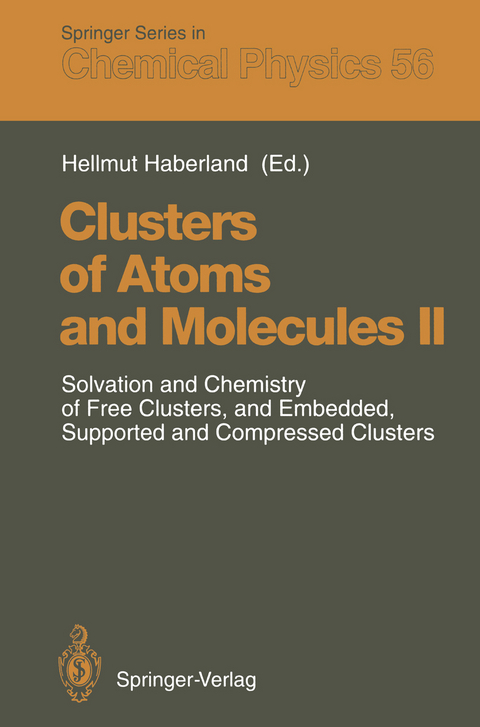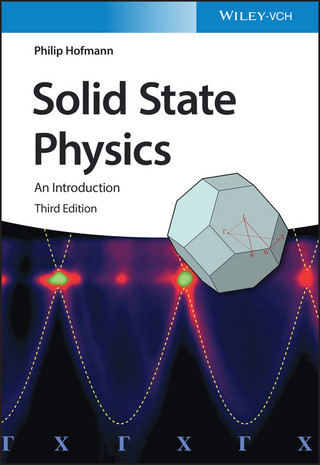
Clusters of Atoms and Molecules II
Springer Berlin (Verlag)
978-3-642-84987-9 (ISBN)
Clusters of Atoms and Molecules deals with the physics and chemistry of clusters and small particles. It is the first book on this subject and provides an overview of the entire field from solid state physics, to physical chemistry and technology. Each chapter is written by an expert in the field. The authors laid emphasis on a simple introduction readily understandable to undergraduates, and then continuously develop towards more advanced topics, ending with the latest results in this rapidly developing field.
1 Introduction.- 1.1 Historical Application of Metal Clusters.- 1.2 Outlook.- Reference.- 2 Solvation, Chemistry, and Charging of Free Clusters.- 2.1 Solvated Atoms in Polar Solvents.- 2.2 IR Spectroscopy of Solvated Molecules.- 2.3 IR Spectroscopy of Hydrogen Bonded Charged Clusters.- 2.4 Solvated Cluster Ions.- 2.5 Solvated Electron Clusters.- 2.6 Internal Reactions and Metastable Dissociations after Ionization of van der Waals Clusters.- 2.7 Multiply Charged Clusters.- 2.8 Chemistry with Neutral Metal Clusters.- 2.9 Chemistry with Cluster Ions.- 3 Embedded, Supported, and Compressed Clusters.- 3.1 Optical Properties of Silver Clusters in Dielectric Matrices.- 3.2 Aerosols, Large Clusters in Gas Suspensions.- 3.3 Metal Clusters in a Liquid Environment Photographic Development.- 3.4 Larger Semiconductor Clusters ("Quantum Dots").- 3.5 Electromagnetic Excitations of Large Clusters.- 3.6 Supported Clusters.- 3.7 Nanocrystalline Materials.- Subject Index of Volume 52.
| Erscheint lt. Verlag | 21.12.2011 |
|---|---|
| Reihe/Serie | Springer Series in Chemical Physics |
| Zusatzinfo | XVIII, 414 p. |
| Verlagsort | Berlin |
| Sprache | englisch |
| Maße | 155 x 235 mm |
| Gewicht | 656 g |
| Themenwelt | Naturwissenschaften ► Physik / Astronomie ► Atom- / Kern- / Molekularphysik |
| Schlagworte | Atom • atomic-molecular • Cluster • Cluster science • Molecule • Nanocrystalline materials • photography • Physical Chemistry • Solid State |
| ISBN-10 | 3-642-84987-3 / 3642849873 |
| ISBN-13 | 978-3-642-84987-9 / 9783642849879 |
| Zustand | Neuware |
| Haben Sie eine Frage zum Produkt? |
aus dem Bereich


